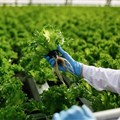How to ensure batch traceability in your food process

The feedback, from many of the stakeholders, was that the systems in place at most levels of the food industry were not robust enough.
While many may have escaped this public scrutiny, tackling a real recall is completely different to conducting a mock recall. Only when the level of pressure and responsibility, that goes with the need for rapid identification of the whereabouts and isolation of contaminated product, literally means the difference between life and death, does one discover whether traceability and recall systems work. And that is not a good time to find out that systems are ineffective.
In order to be prepared, the requirements of a full traceability system must be understood.
Traceability – now a basic legal requirement
The seriousness of having a reliable method for this aspect of consumer protection is highlighted by the recent inclusion of traceability as an additional requirement in the new hygiene regulation, R638 – Regulations governing general hygiene requirements for food premises, the transport of food and related matters.
This regulation is promulgated under the Foodstuffs, Cosmetics and Disinfectants Act, (ACT No 54 of 1972) and is the minimum legal requirement applicable to all food premises in South Africa.
R638 of 2018, Regulation 10, reads that the person in charge of the food premises is responsible for ensuring:
• That there is compliance with these regulations through the keeping of appropriate records and that records applicable to processing, production and distribution must be retained for a period of at least 6 months after the shelf -life of the product has ended.
• That foodstuffs manufactured, kept or sold from the premises complies in all respects to the provisions of the Act and its regulations, including the labelling thereof.
• That a traceability system is maintained according to the best available method and a recall procedure is in place. Any incident requiring recall activation is reported to the local inspector and the national directorate of food control.
Other legislation defines the requirements for a batch or lot. According to R146 of 2010, a batch means a definite quantity of a commodity produced essentially under the same conditions, in a time frame not exceeding 24 hours.
This regulation goes on to prescribe that “A container of a foodstuff shall be clearly marked with a batch number in such a way that the specific batch is easily identifiable and traceable unless otherwise stipulated.”
How traceable are the batches?
Processors and manufacturers need to know which customer received which batch of product and how much of each batch they received. Many systems can trace customers and the products they received but not down to a batch level. Some systems can trace which batch of final product the customer received, but not which batch of ingredients were used.
There needs to be control over ingredients and over the final product. Supplier advice that a contaminated ingredient had been shipped should be followed by easy identification of batches of product containing that ingredient.
This means that every ingredient needs to be allocated unique batch numbers on delivery and the batch information should be transferred to every production record. Many of the manual systems in place do not meet the requirements of lot traceability. Technology provides the obvious solutions.
How long does a mock recall take?
Responsible manufacturers should recall products that are a potential risk to the consumer. When a recall occurs, regulations require the public announcement of the recall. This poses the risk of reputation damage, and so how do you minimise the impact of a recall?
The mock recall programme is key to minimising the impact of a real recall. The time taken to account for all products is a key indicator of its efficacy. The time to complete the recall is reduced by having the right systems in place. The industry standard system for this type of data collection, storage and reporting is known as an ERP system (Enterprise Resource Planning).
Some ERP systems are designed for more financial functions, while others like Syspro are designed for manufacturers. Manufacturing ERP systems are designed for companies that purchase, assemble/produce, weigh and label product. This is a staple for the food industry.
Capturing data from end-to-end, means the ERP system has traceability built in. Traceability and reporting make it quick and easy to get the traceback reporting needed.
Time to improve your traceability
Given the increased legal emphasis in this area and the reality of last year’s food-borne disease outbreak, now is the right time for producers and manufacturers to review their current systems and make improvements. It makes good business sense to maintain customer confidence by mitigating the adverse effects and media attention of the recall.
Source: Food Focus
Source: AgriOrbit

AgriOrbit is a product of Centurion-based agricultural magazine publisher Plaas Media. Plaas Media is an independent agricultural media house. It is the only South African agricultural media house to offer a true 360-degree media offering to role-players in agriculture. Its entire portfolio is based on sound content of a scientific and semi-scientific nature.
Go to: http://agriorbit.com/








